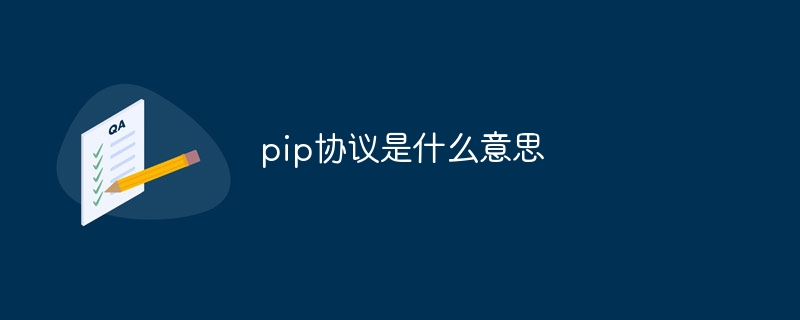Home >Backend Development >Python Tutorial >What does pip protocol mean?
What does pip protocol mean?
- 小老鼠Original
- 2023-11-23 17:26:131844browse
The pip protocol refers to the communication protocol between the Pip tool and the PyPI server, which is used to install, upgrade and manage Python packages.

The operating system for this tutorial: Windows 10 system, Python version 3.11.4, Dell G3 computer.
In computer science, "PIP" can refer to multiple concepts, one of which is "Python Installation Proposal", which is Python installation recommendation. However, based on the context of your mention, I'm guessing you may be referring to "PIP" as Python's package management tool.
"Pip" is the abbreviation of "Package Installer for Python" and is the officially recommended package management tool for Python. It is used to easily install, upgrade and manage Python packages. Pip uses a protocol called "Python Package Index" (PyPI).
PyPI is the official package index of Python. It is a public, global software warehouse that stores a large number of Python packages. Through PyPI, developers can upload and share their own Python packages with other developers. Pip uses the protocol provided by PyPI to search, download and install Python packages from PyPI.
The basic principle of the Pip protocol is to communicate with the PyPI server through the HTTP protocol, send requests and receive responses. Pip will search for the corresponding package information from PyPI based on the user's input, and download the corresponding package file to the local installation. At the same time, Pip also supports functions such as upgrading installed packages, uninstalling unnecessary packages, and viewing the list of installed packages.
In short, the Pip protocol refers to the communication protocol between the Pip tool and the PyPI server, which is used to install, upgrade and manage Python packages.
The above is the detailed content of What does pip protocol mean?. For more information, please follow other related articles on the PHP Chinese website!

